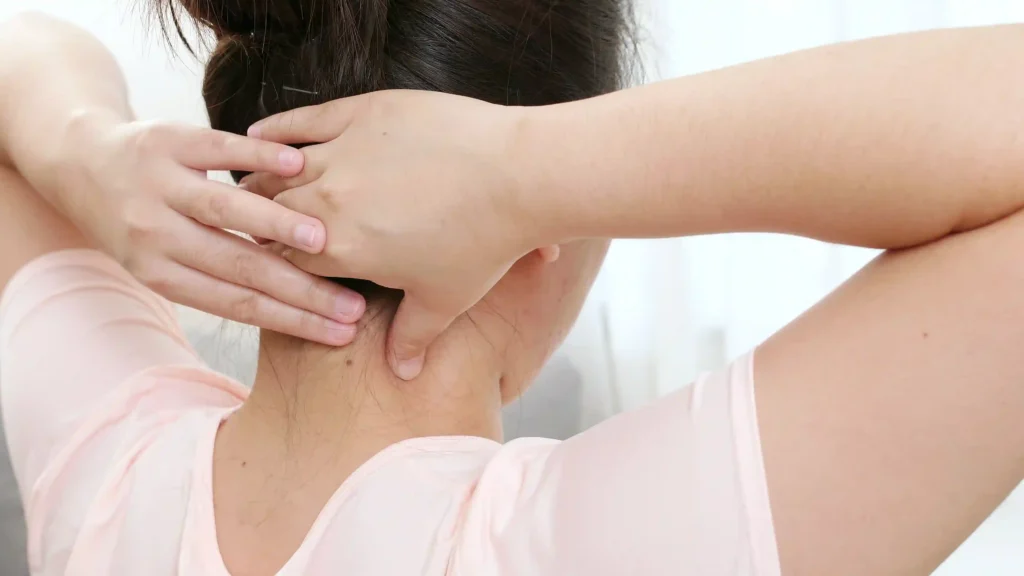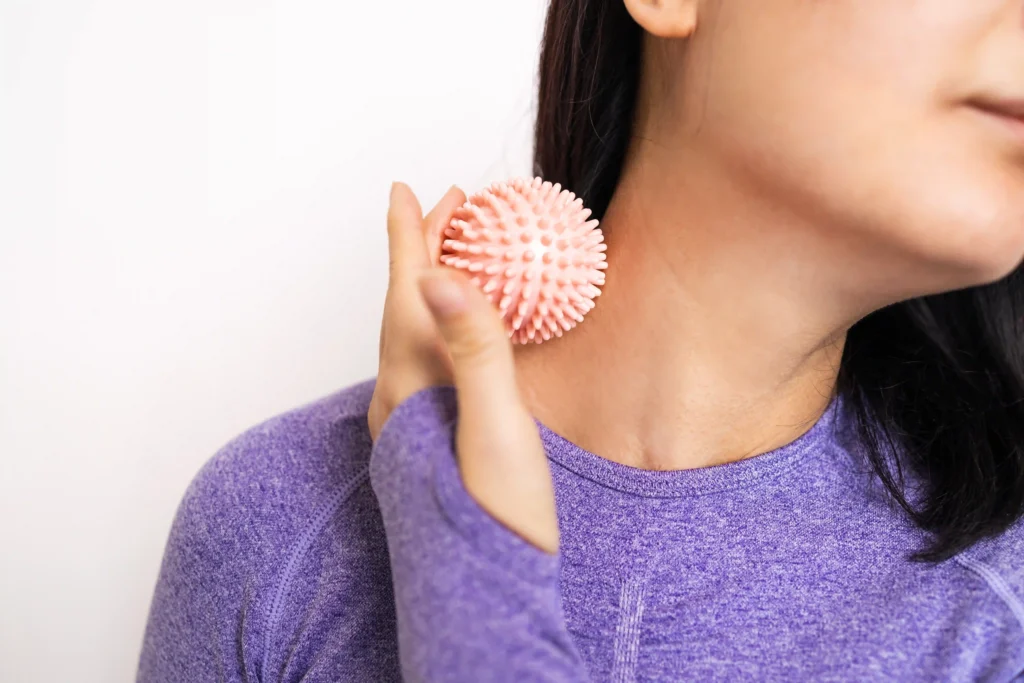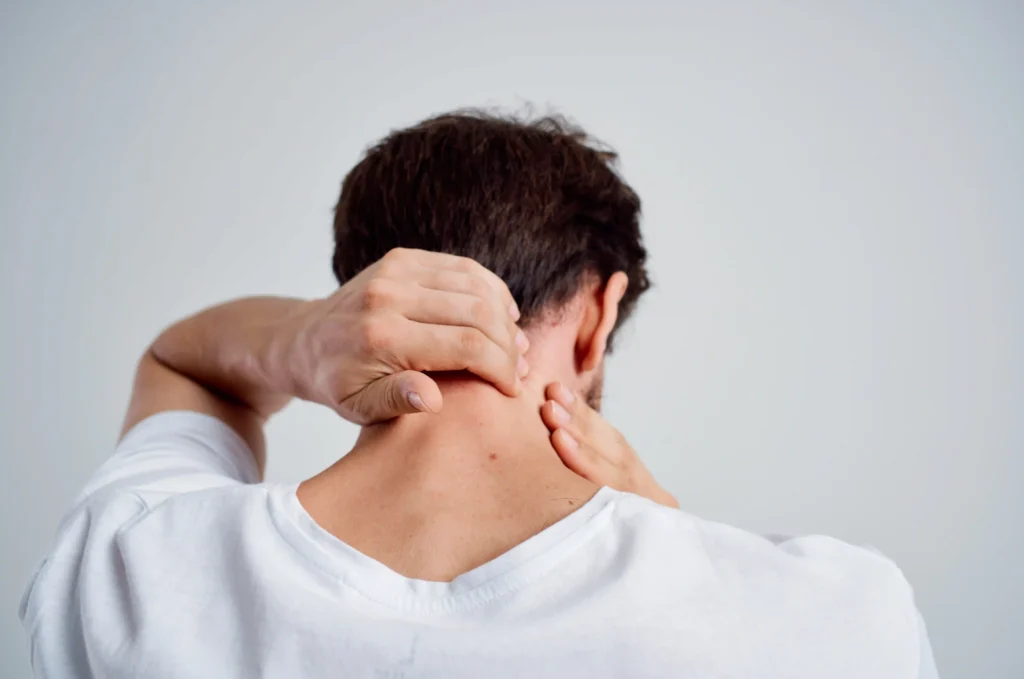
Table of Contents
ToggleWhen we talk about neck pain relief pressure points, we’re referring to specific areas on your body that can be stimulated to alleviate tension, stiffness, or spasms in your neck. As a spine surgeon with over 25 years of experience at Long Island Neuroscience Specialists, I’ve seen firsthand how effective complementary techniques like acupressure can be when used alongside traditional medical care.
Acupressure focuses on applying manual pressure to these points, improving blood circulation and releasing tight muscles, making it a practical, drug-free solution. Many patients come to us for advanced surgical options, but I always advocate for holistic methods like acupressure to manage mild to moderate discomfort.
The best part? You can practice this technique at home. Let’s dive deeper into how this works.

Acupressure is rooted in traditional Chinese medicine, but even modern research has explored its benefits. By targeting neck pain relief pressure points, acupressure stimulates the nervous system, encouraging the release of endorphins—your body’s natural painkillers.
It also improves blood flow to stiff areas, helping muscles relax. Though acupressure differs from acupuncture (which uses needles), both techniques share the same foundation: stimulating specific points to restore balance.
Scientific studies suggest that acupressure may not work for everyone, but it’s worth trying if you prefer non-invasive solutions. In my own practice, I’ve seen patients incorporate acupressure into their routines with great success, often experiencing less dependency on pain medications.
While it’s no substitute for surgery when structural issues are involved, it’s a fantastic way to supplement professional care. Read more here.
Targeting the right pressure points is critical for achieving relief. Below are five pressure points that are particularly effective:
Performing acupressure is simple but requires mindfulness and consistency. Here’s how you can do it:
Repeat this process 2–3 times per day for optimal results. With consistent practice, you’ll likely notice reduced pain and increased mobility.

While acupressure is generally safe, there are some pitfalls to be mindful of:
By steering clear of these mistakes, you can ensure that your acupressure practice is both safe and effective.
Acupressure works best when combined with other self-care practices. For instance, applying a warm compress before a session can loosen tight muscles, making it easier to stimulate pressure points.
Gentle stretching exercises also enhance flexibility and prevent stiffness. Posture plays a significant role in neck pain.
I often recommend ergonomic adjustments like an appropriately aligned chair and monitor for desk workers. Managing stress through yoga or meditation can also reduce tension in the neck and shoulders.
For chronic pain, integrating acupressure with professional physical therapy or chiropractic care may yield better results. If you’re unsure about combining treatments, feel free to consult our team at Long Island Neuroscience Specialists for tailored advice. Read more here.
In my practice, I’ve found that the right tools can make acupressure easier and more effective, especially for patients with limited mobility or those struggling to reach certain areas. For instance, a simple tennis ball can work wonders for pressure points like the Jian Jing.
Placing the ball between your back and a wall, then rolling it over the area, allows you to apply steady, controlled pressure. Another helpful option is a massage cane, which is ergonomically designed to reach areas like the base of your skull or the Heaven’s Pillar point.
For those interested in a more guided approach, there are mobile apps that provide visual diagrams and step-by-step instructions for targeting pressure points. Online resources, such as acupressure charts or videos, can also assist in locating the exact spots you need.
Some patients prefer to start with these tools before seeking hands-on guidance from a professional acupressurist. At Long Island Neuroscience Specialists, we often recommend reliable educational resources to our patients who want to try acupressure as part of their self-care routine.
Managing neck pain doesn’t always require invasive treatments or medications. By using neck pain relief pressure points, you can take an active role in your wellness journey.
With over 25 years of experience as a spine surgeon, I’ve seen how combining medical expertise with holistic practices like acupressure can dramatically improve a patient’s quality of life. The key is consistency and mindfulness.
Whether you’re targeting the Wind Pool for tension headaches or the Heaven’s Pillar for stiffness, these pressure points offer a simple, accessible way to alleviate discomfort. If your symptoms persist or worsen, don’t hesitate to reach out to our team at Long Island Neuroscience Specialists for a comprehensive evaluation.
Together, we can create a treatment plan that addresses your needs.
GET IN TOUCH +
285 Sills Road
Building 5-6, Suite E
East Patchogue, NY 11772
(631) 475-5511
184 N. Belle Mead Road
East Setauket, NY 11733
(631) 675-6226
GET IN TOUCH +
285 Sills Road
Building 5-6, Suite E
East Patchogue, NY 11772
(631) 475-5511
184 N. Belle Mead Road
East Setauket, NY 11733
(631) 675-6226
SUBSCRIBE TO OUR NEWSLETTER +
Send us a Google review. Click this link and let us know how we did!
Review us on Yelp too.